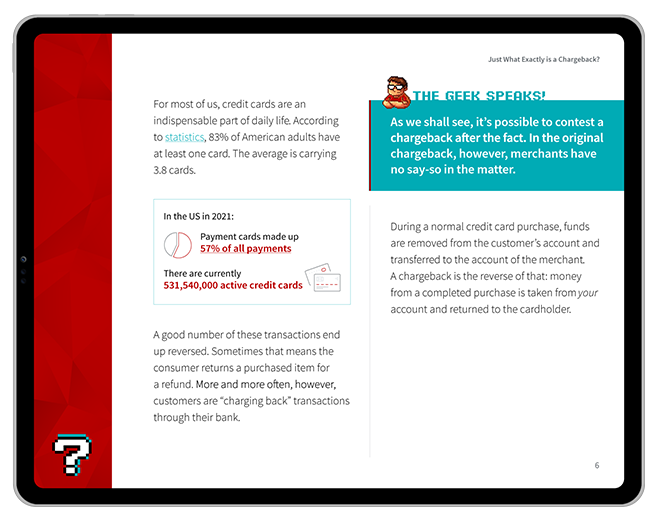How eCommerce Sellers Can Avoid Liability Associated With Transaction Laundering
Transaction laundering is a massive problem for anyone operating in the payments space. While it primarily impacts financial institutions, there are consequences for merchants and other players as well.
What is transaction laundering, though? Who ultimately pays the price for this brand of criminal activity? In this post, we’ll delve into these questions and examine what’s at stake specifically as it relates to eCommerce merchants.
Recommended reading
- Package Redirection Scams: Tips to Stop Them From Happening
- The Top 10 Prepaid Card Scams to Watch Out For in 2024
- How do Banks Conduct Credit Card Fraud Investigations?
- What is SIM Swapping Fraud & How Does It Work?
- Key Credit Card Fraud Statistics to Know for 2024
- Scammers See Opportunity as March Madness Begins
What is Transaction Laundering?
- Transaction Laundering
Transaction laundering is a process by which fraudsters disguise themselves as legitimate eCommerce merchants and begin working with an acquirer to process payments. Unbeknownst to the acquirer, the fraudster is actually using their account to launder revenue from criminal activity.
[noun]/trən ● zək ● SHən ● lon ● dər ● iNG/As the term implies, transaction laundering is a form of money laundering. The end goal of money laundering is to take funds acquired through illegal means and make it so that they cannot be traced back to that illegal activity. eCommerce transactions can be a means to carry this out.
This is a serious matter. Risk estimates show that criminals launder $352 billion globally through eCommerce channels each year. That’s greater than the nominal GDP of the majority of countries on Earth.
As you can see, this is a serious problem that is only growing worse. And, it carries far-reaching ramifications for the entire payments ecosystem.
How Does Transaction Laundering Work?
There are multiple methods a fraudster can employ to engage in transaction laundering. In some cases, the fraudsters might impersonate a merchant to conduct the fraud themselves. In others, a legitimate merchant may not know their site is being used, or they may be acting in coordination with a second-party fraudster.
To illustrate, let’s take a look at a few ways in which online sellers can get caught up in these schemes:
This is not an exhaustive list; just some of the most common tactics. Fraudsters can also engage in “pass-through” attacks, for instance, in which they embed a payment link in an illegal site. Or, they might set up a completely fake eCommerce site that they can use as a front operation. These may also be examples of transaction laundering.
Why is Transaction Laundering so Hard to Detect?
Transaction laundering is notoriously difficult to detect for several reasons. The sophistication of techniques employed, the use of technology, and the inherent nature of online commerce are all factors. Here are some of the primary reasons why detecting transaction laundering poses significant challenges:
Fraudsters often mix illicit transactions with genuine ones, making them difficult to distinguish. By processing a small volume of illicit transactions alongside legitimate ones, they can avoid raising any immediate red flags.
As detection methods improve, criminals adapt by devising new methods and tactics. This constant evolution means that traditional detection methods often lag behind the latest laundering techniques.
The digital marketplace has a vast number of interconnected platforms, payment processors, and merchant accounts. This complexity provides ample opportunities for fraudsters to find weak points and exploit them.
Fraudsters use advanced technologies, including automated bots and machine learning, to mimic legitimate user behaviors and transaction patterns. This further obscures illicit activities.
Money launderers can distribute illicit transactions across multiple payment processors and gateways. This reduces the likelihood of any single processor detecting an unusual volume or pattern of activity.
The global nature of online commerce means that transactions have many layers of geographic separation. Fraudsters can initiate transactions from one location, process them through a merchant or gateway in a second location, and then funnel the funds to a third location.
Some fraudsters operate with the knowledge that they may be detected eventually. As a result, they set up operations that are intended to be short-lived, extracting as much value as possible before shutting down and moving on.
Some merchants or payment processors, fearing reputational damage or regulatory consequences, might be hesitant to report suspicious activities, allowing transaction laundering to persist.
The Impact of Transaction Laundering: What's Being Done?
Frankly, transaction laundering is a huge problem. As we already touched on, this activity costs the global economy hundreds of billions of dollars every year. What’s worse is that the proceeds from transaction laundering usually goes to finance other criminal activities.
The Electronic Transactions Association, a representative body for the payments sector, provided some recent data on this threat. They estimate that as much as 70% of online sales relating to illicit drugs, counterfeit products, and unauthorized adult content are connected to some variant of transaction laundering.
The allure of the potential profit has led to a surge in websites offering illegal products and services. Compounding this trend, lax underwriting standards in recent years have made it comparatively easy for online sellers of prohibited goods to establish a merchant account.
It's essential for payment processors, online marketplaces, and regulatory bodies to invest in advanced, adaptable technologies to counter transaction laundering. They must also collaborate closely to share intelligence and best practices to counter transaction laundering effectively.
Some progress is being made on this front. Recent actions by the Financial Crimes Enforcement Network (FinCEN), as well as other regulators, have increased scrutiny of banks working with third-party payment processors. As a result, banks are now pushing ISOs and payment facilitators to be more rigorous in underwriting accounts. The pressure is on to discern the actual operators of a website from nominal owners.
FinCEN now mandates financial institutions to verify the identities of any nominee holding a 25% or more stake in a company before opening an account. The aim is to identify the true decision-makers, which often differ from the named owners. This rule is just one among several regulations emphasizing the importance for banks to embrace Know Your Customer (KYC) standards in a meaningful sense.
Transaction Laundering Red Flags
So, here’s the key question: what does transaction laundering actually look like?
Knowing what to watch out for can improve your chances of protecting both your business's reputation and financial health. With that in mind, here are some crucial transaction laundering red flags every eCommerce merchant should be aware of:
Rapid Transaction Spikes
An unexpected and sudden surge in sales, particularly high-value transactions, can suggest an influx of illicit funds being cleaned through the platform.Mismatched Products & Transaction Values
The transaction amount doesn't align with a product's typical market value.Frequent Returns & Refunds
A high rate of returns and refunds, where sales are made and then reversed to make the money appear legitimate.Recurring IP Address
A barrage of transactions from one IP address in a short time frame signals automated or coordinated activities.Odd Shipping Patterns
Multiple orders shipped to different addresses, but billed to a single individual (or the reverse).Transactions at Unusual Hours
A flurry of transactions at off-peak hours, especially if repeated and from the same user.High-Risk Geographic Locations
Transactions directed to regions known for high levels of fraud, especially if originating from regions with stringent financial controls.Mismatched Merchant Details
Inconsistencies between details a merchant provides and what's evident from their transactions.Anomalies in Customer Behavior
Unusual patterns, such as frequent transactions of identical amounts or a single user employing multiple cards in quick succession.Understanding and identifying these red flags is not just about adhering to regulations or avoiding penalties. It's about preserving customer trust, maintaining a strong business reputation, and ensuring the long-term viability of your eCommerce platform.
In a world where the line between legitimate business and fraud can be thin, knowledge and vigilance are a merchant's best allies.
15 Best Practices to Prevent Transaction Laundering
eCommerce merchants play a pivotal role in preventing transaction laundering. As the primary gatekeepers of online transactions, they are at the frontline of this challenge. Their position allows them to monitor, assess, and intervene in potentially suspicious activities, making them essential players in the broader effort to combat online financial crimes.
To that end, here are 15 anti-money laundering (AML) best practices that can help protect your business from criminals:
#1 | Advanced Detection Systems
Invest in advanced fraud detection systems that use machine learning and AI. These can analyze large datasets in real-time and can be more effective in pinpointing suspicious activities.
#2 | Clear Terms of Service
Set clear terms of service and enforce them. Make sure that there are strict repercussions for any violations, such as suspensions or bans.
#3 | Collaboration
Collaborate with other eCommerce platforms and industry groups. Sharing knowledge about potential threats can be beneficial for all parties involved.
#4 | Customer Behavior Analysis
Analyze customer behavior on the site. Abnormal behaviors, like rapid, repeated transactions from the same IP address, can be red flags.
#5 | Data Encryption
Ensure that all transaction data, both in transit and at rest, is encrypted. This makes it harder for unauthorized parties to gain access to sensitive information.
#6 | Feedback Systems
Implement a system through which customers can report suspicious activities. Sometimes, end-users can spot inconsistencies that might go unnoticed by the system.
#7 | Geographic Restrictions
If certain regions are identified as being at high risk, consider implementing geographic restrictions or additional checks for transactions originating from those areas.
#8 | Know Your Customer (KYC)
Adopt a robust KYC process. Ensure that you have adequate information about your customers and update this data periodically.
#9 | Maintain Transparency
Keep transparent transaction records and establish open communication lines with banks and payment processors. Regular audits and reviews can help spot any discrepancies.
#10 | Multi-Factor Authentication
Require multi-factor authentication for merchant accounts. This adds an additional layer of security, making it harder for fraudsters to gain unauthorized access.
#11 | Periodic Review of Merchants
FIs should periodically review even the most established merchants. Continuous checks can help in identifying any merchant whose business model has shifted towards suspicious activities.
#12 | Regular Monitoring
Consistently monitor transaction activities to detect unusual patterns. This can include unexpected spikes in sales, many high-value transactions in a short period, or odd shipping patterns.
#13 | Regular System Updates
Keep all systems, especially payment gateways, regularly updated. This helps in patching any vulnerabilities that could be exploited.
#14 | Staff Training
Regularly train staff on the latest techniques used by launderers. Keeping the team updated helps in early detection and prevention.
#15 | Vigorous Merchant Vetting
Before onboarding, comprehensively vet all new merchants or sellers. This includes verifying their identity, background, and the nature of their business.
Remember: the power of technology plays a pivotal role in thwarting transaction laundering.
Many financial institutions and related entities are turning to cutting-edge solutions, like machine learning and blockchain, to pinpoint and curb dubious transactions. Such interventions have become crucial on digital platforms where transactions can transpire swiftly and without clear attribution.
Is your business up-to-date with the latest AML software? Click below to talk to one of our in-house fraud experts today.
FAQs
What is transaction laundering?
Transaction laundering is a process by which fraudsters disguise themselves as legitimate eCommerce merchants and begin working with an acquirer to process payments. Unbeknownst to the acquirer, the fraudster is actually using their account to launder revenue from criminal activity.
How do you identify transaction laundering?
Transaction laundering can be identified by spotting inconsistent transaction patterns, observing mismatched products or services on a website compared to the transaction details, and detecting sudden, unexplained surges in sales or high-value transactions from a previously low-volume merchant.
What is the difference between money laundering and transaction laundering?
Money laundering is the process of making illegally gained proceeds appear legitimate through a series of financial transactions or manipulations. Transaction laundering, on the other hand, is a digital form of money laundering where illicit merchants process their transactions through seemingly legitimate online merchant accounts.
Essentially, while money laundering encompasses a broader range of activities, transaction laundering specifically pertains to the misuse of eCommerce platforms to disguise the true nature of goods and services being sold.
How do banks catch money laundering?
Banks employ advanced detection systems, like machine learning algorithms, to analyze transaction patterns and identify suspicious activities. They also adhere to strict Know Your Customer (KYC) and Anti-Money Laundering (AML) regulations, which require them to verify the identities of their clients and report any irregularities. When anomalies are spotted, banks conduct further investigations and, if necessary, report to regulatory authorities for potential legal action.














